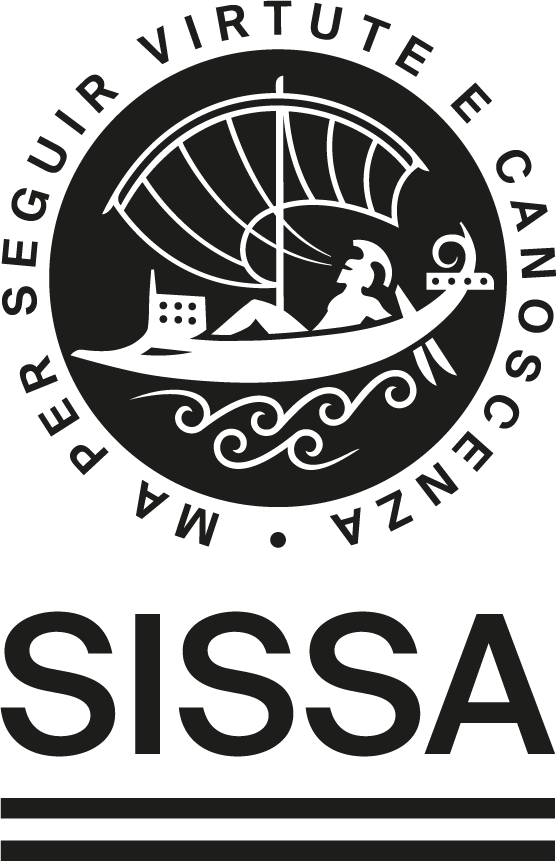by M. Dalmonte (2 credits, type C)
Introduction and overall goals
The idea of these lectures is to cover relevant topics in the field of synthetic quantum systems. The course is structured in four modules: the first and the last have very general character, while the middle ones go into details of specific platforms.
Here is a brief overview:
- Mod 1: review of quantum optics, including atom physics and light-matter
interactions; - Mod 2: cold atoms in optical lattices- basics and advanced topics;
- Mod 3: strongly interacting quantum systems in Rydberg atom arrays;
- Mod 4: ultimate probes of synthetic quantum matter – from entanglement
to complexity
Lecture notes and references will be provided as the course progresses.
- Goals: gain the basic theoretical tools and methods to understand in some detail experiments in synthetic quantum systems.
- Enabling skills: being able to propose a novel technique to realize or probe quantum matter.
- Pre-requisites: master equation, a tiny bit of band theory (Bloch theorem), atomic physics (solution of the Hydrogen atom and angular momentum theory), advanced quantum mechanics. Basic knowledge of quantum resource theory (entanglement) and many-body theory is a plus, but not required.
Schedule of the lectures
Crash course on quantum optics
- basic discussion on setups and energy scales;
- review of Hydrogen atom structure;
- useful extras: Zeeman effect, Rydberg states.
- atom-field interactions: Schroedinger equation in the electric dipole approximation;
- atom-field interactions for quantized fields: the Jaynes-Cummings model;
- basic properties of the JC model: undressed and dressed spectra.
- dynamics of atoms coupled to a single mode: Rabi oscillations, collapse and revivals;
- [opt] intermezzo – how to perform a ’gate’;
- effects of off-resonant coupling: the AC Stark shift;
- coupling to a continuum of states: theory of spontaneous emission;
- Fermi golden rule and emission from flat spectrum;
- Wigner-Weisskopf theory of spontaneous emission, and irreversibility of Hamiltonian dynamics.
Cold atoms in optical lattices
- dipole trapping: basic ideas, spontaneous emission;
- coupling to a single state: red and blue detuned lattices;
- brief comments on energy scales;
- reminder on Bloch theorem;
- solution of single wave-function problem, energy bands.
- Wannier functions and Hubbard model representation;
- interacting Hamiltonian and Bose-Hubbard models;
- basic aspects of Bose-Hubbard models: Superfluid to Mott transition;
- review of modern applications: SU(N) fermions, mesoscopic Hubbard models.
- classical gauge potentials: Jaksch-Zoller and Gerbier-Dalibard approaches;
- synthetic gauge potentials in synthetic dimensions: quantum Hall ribbons;
- beyond the Hofstadter butterfly: combining interactions and back-ground potentials.
- [opt] interaction tuning: contact interactions (resonances, closed-shell atoms);
- spin models with atoms and molecules;
- gauge theories on a lattice: basic ideas.
Strongly interacting quantum systems in Rydberg atom arrays
- two-atom interactions, spaghetti, and Rydberg blockade;
- Rydberg atoms in optical tweezers and strongly interacting spin systems;
- Rydberg dressing.
- frustrated magnetism and phase transitions;
- Schwinger model dynamics;
- [opt] topological matter: SSH model and deconfined lattice gauge theories.
Probing synthetic quantum matter – from entanglement to complexity
- a brief review of quantum correlations, and bipartite entanglement measures and witnesses;
- state tomography;
- Renyi entropies from random measurements in trapped ion chains;
- [opt] entanglement Hamiltonian tomography.
- brief intro to algorithmic complexity;
- wave function snapshots and network interpretation;
- scale-free and Erdos-Renyi networks in quantum simulators.

